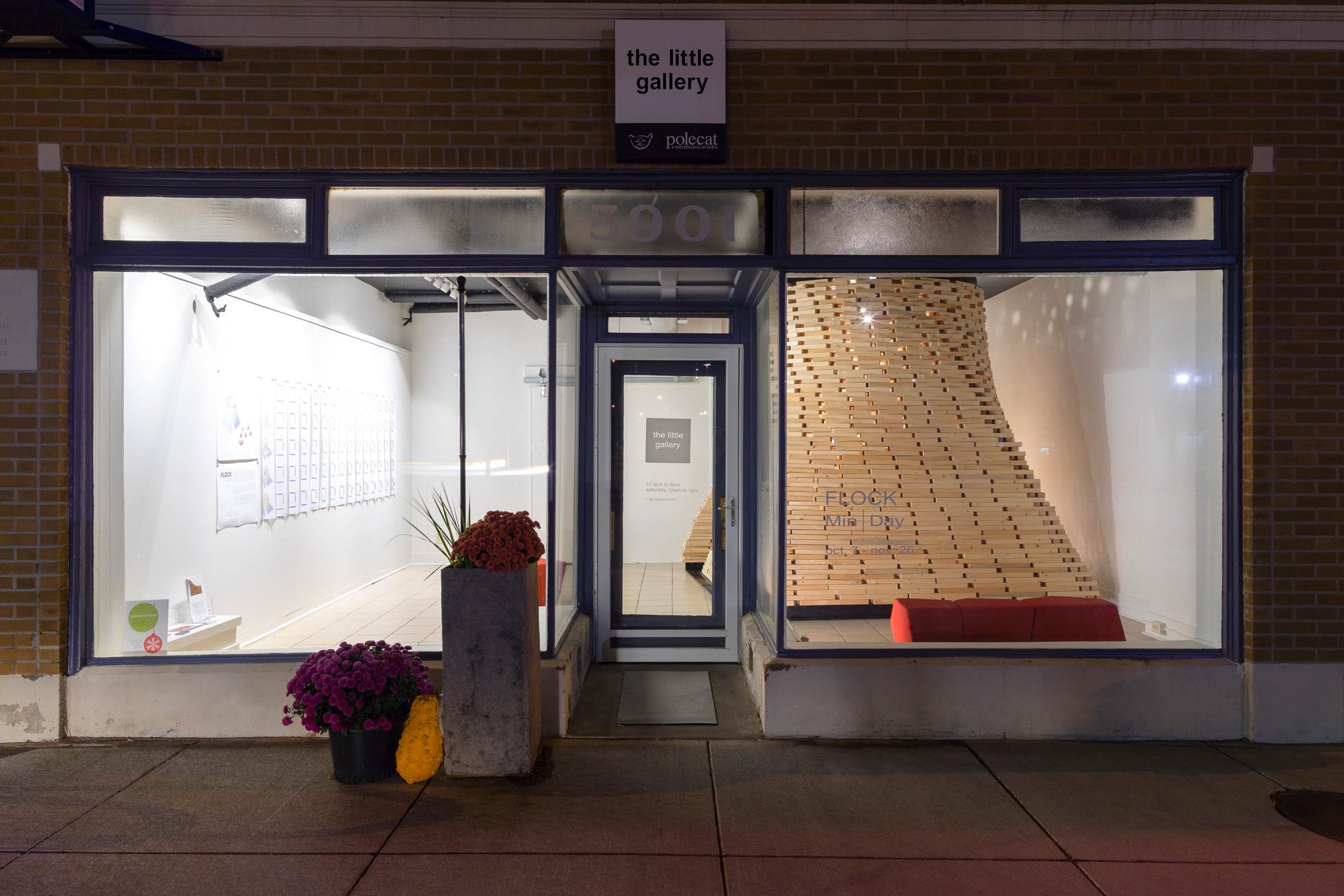
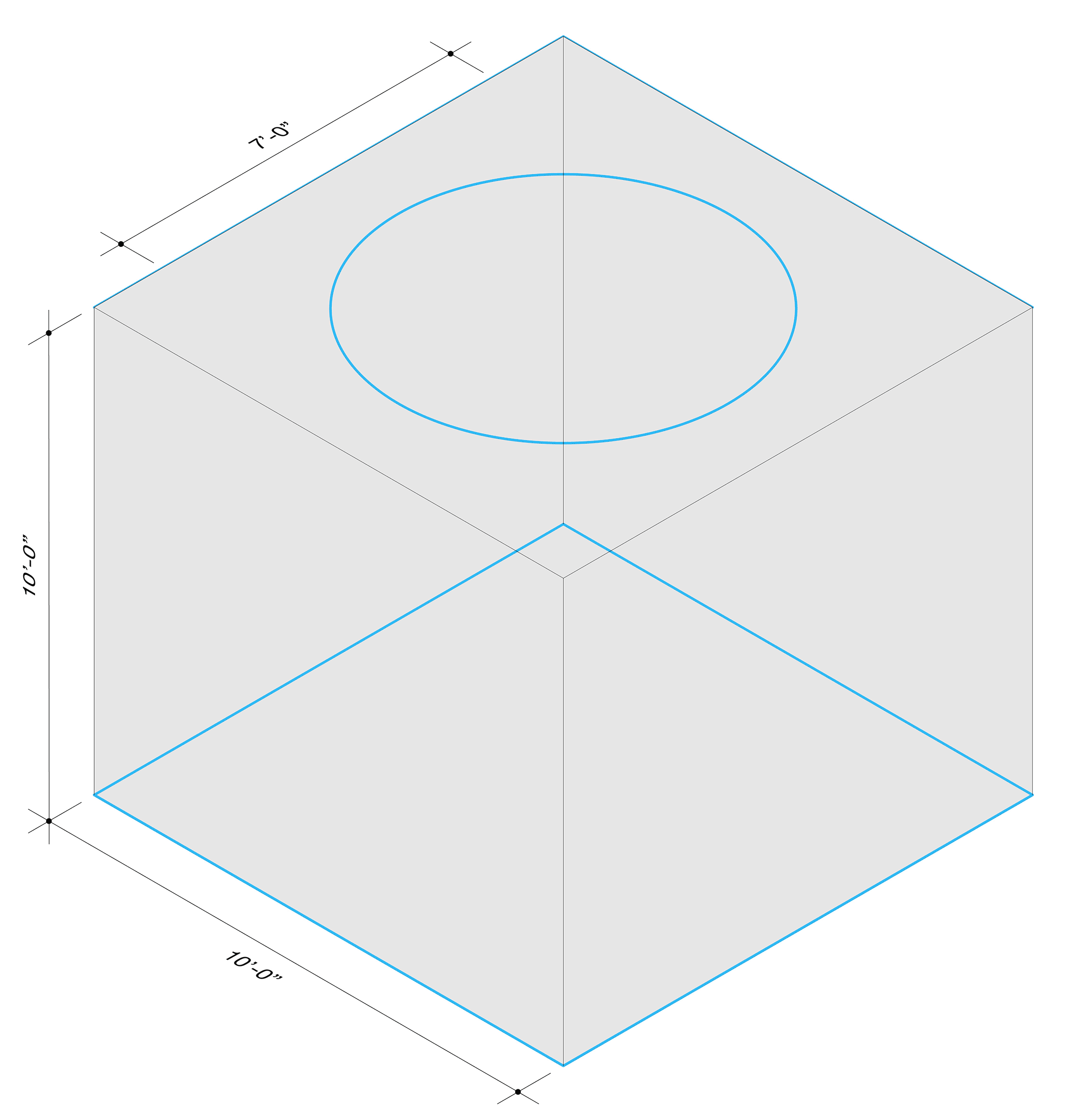
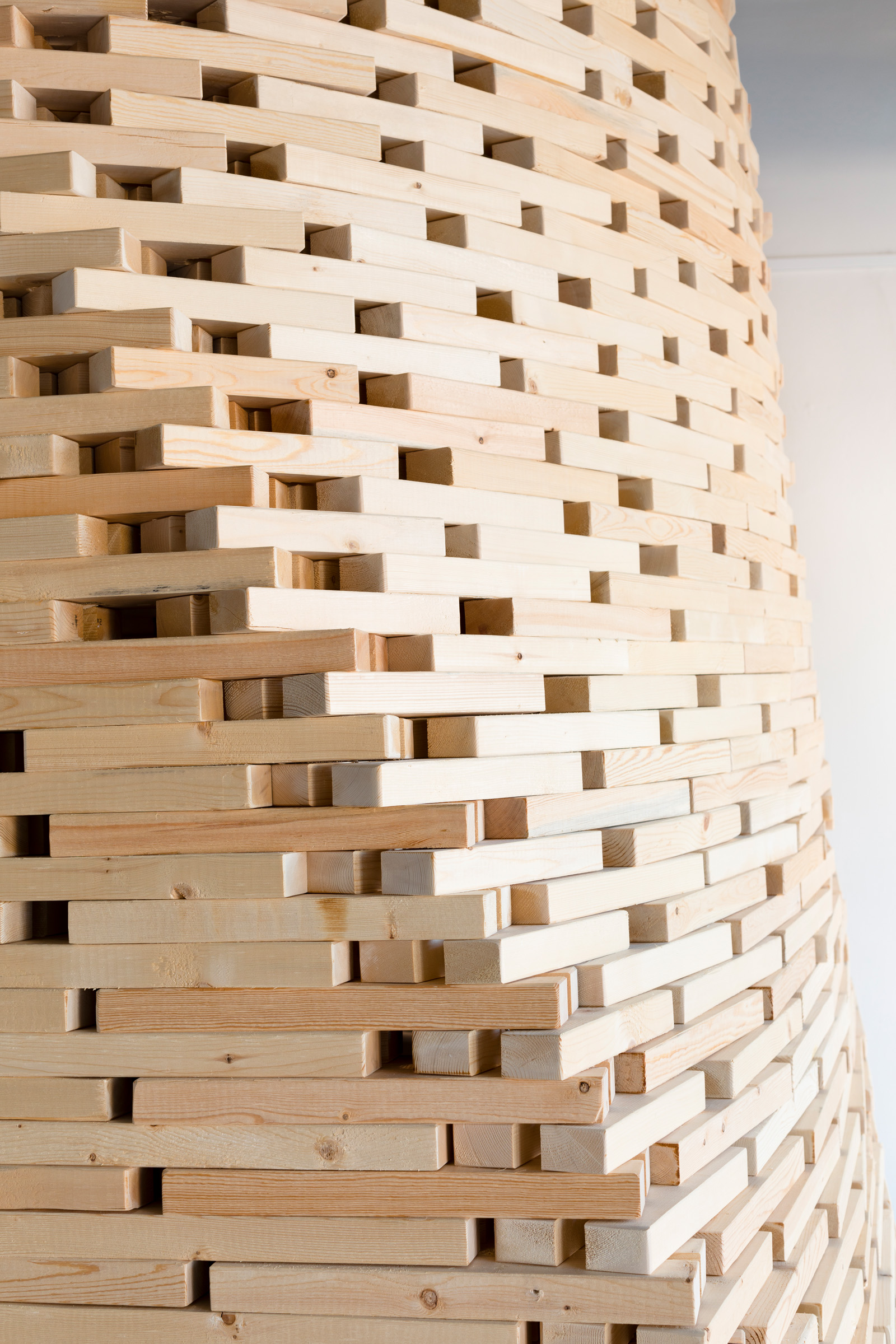
Flock challenges the expectation that the combination of advanced design computation and digital fabrication results in projects with built with fine tolerance and high precision. Instead, FLOCK is a low-resolution construction designed with high-precision software. The inherent looseness of the system permits the use of average quality materials and yields an unexpected lack of control and the scale of the individual part.
Fitting within a 10’-0” cube, FLOCK transitions from a 10‘-0” x 10’-0” square at the base to a 7’-0” diameter circle at the top with an opening on one side for entrance. The structure comprises a bolted steel base formed from a 4” wide-flange steel beam, stacked short lengths of 2x6 lumber, and a bolted steel tension ring at the top. Cables anchored to the steel base extend through slots in the lumber and are tensioned with swaged fittings above the top ring. The wood components consist of 2 types: a standard slotted 2x6 (in a limited set of different lengths) and a shaped 2x6 that projects into the space (called a “twig”). The installation is freestanding and does not require attachment or bracing to the existing walls or floor for stability.
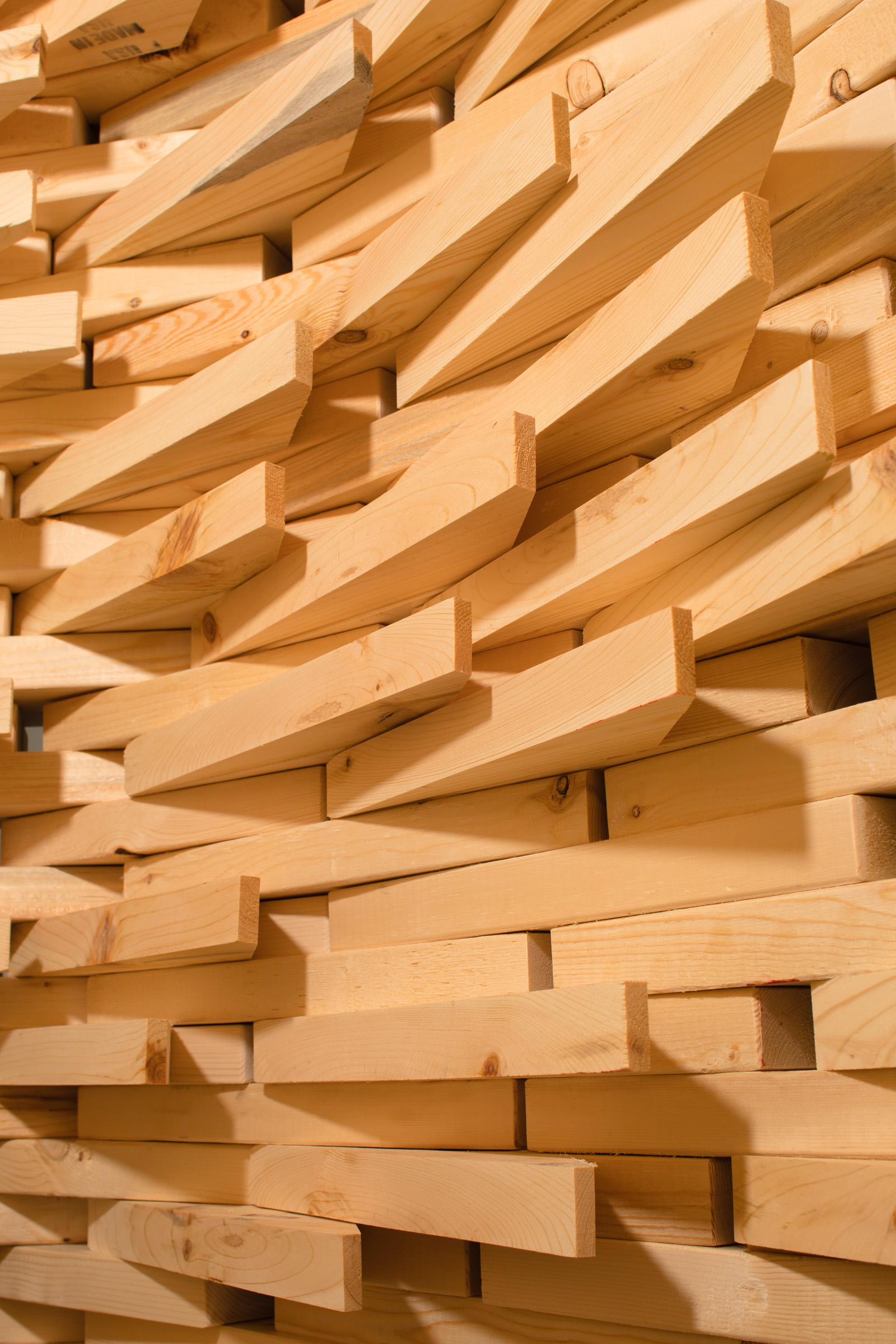
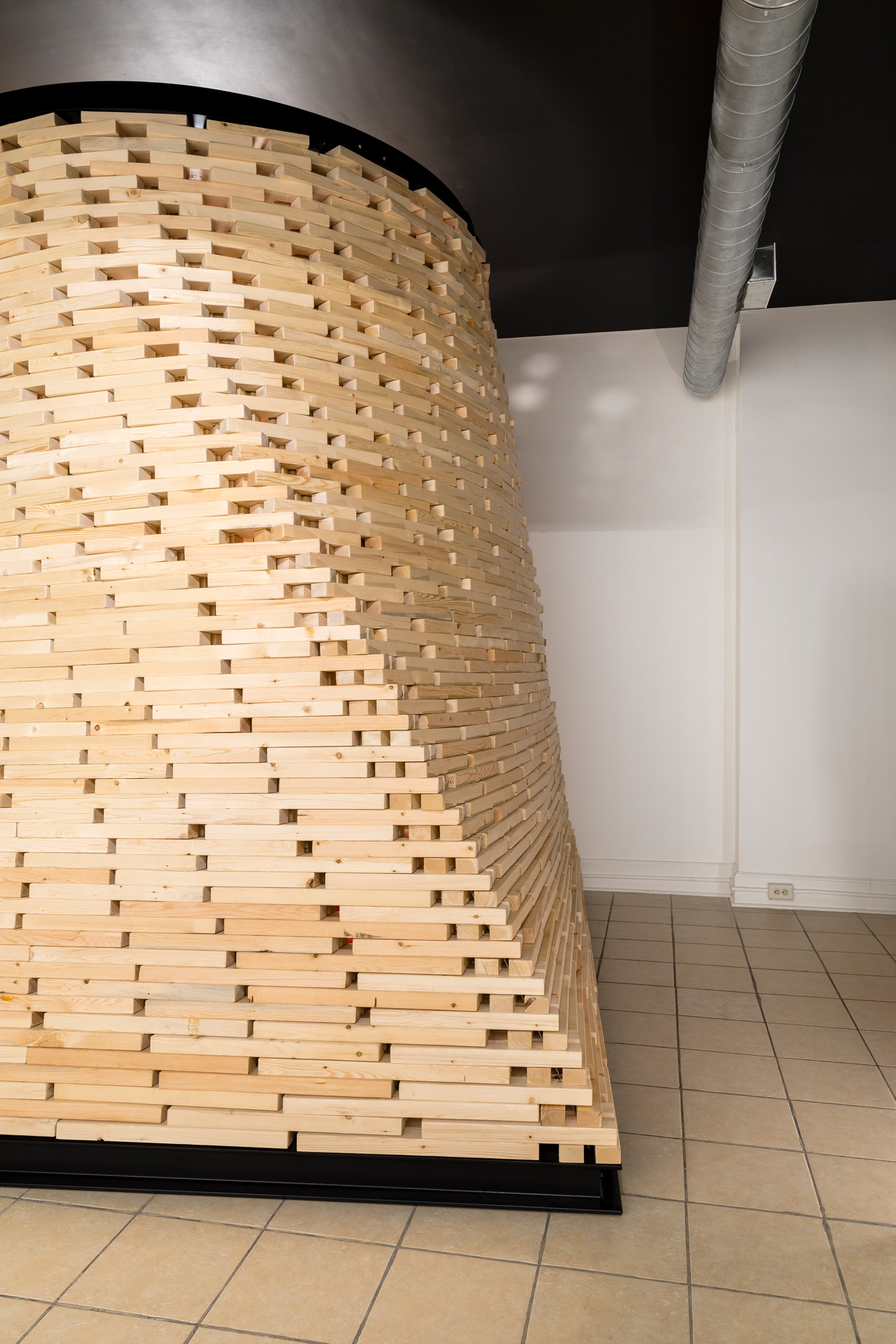

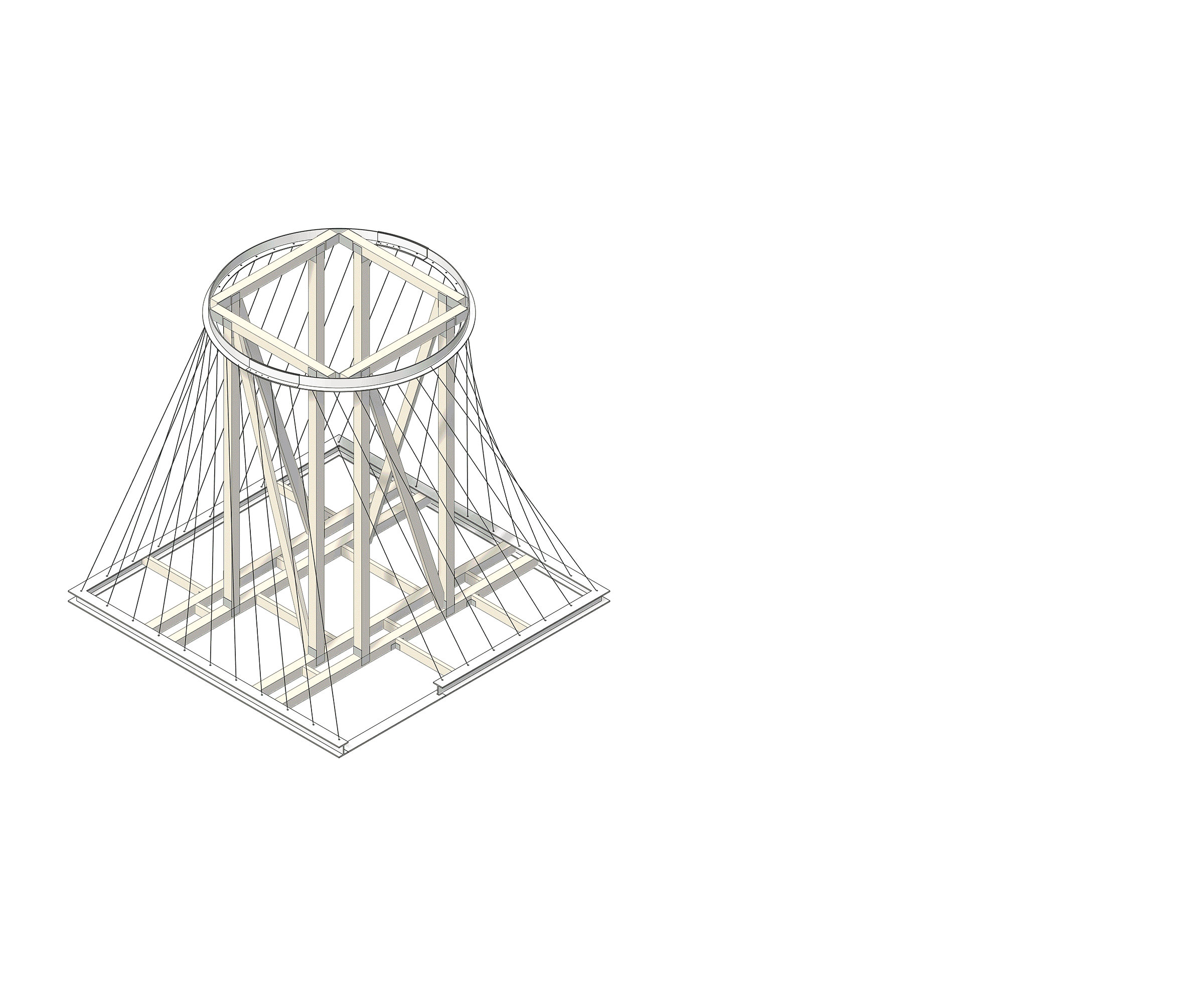
Construction sequence: scaffold, cable, stack, remove scaffold; board lengths (colors) defined by parametric model
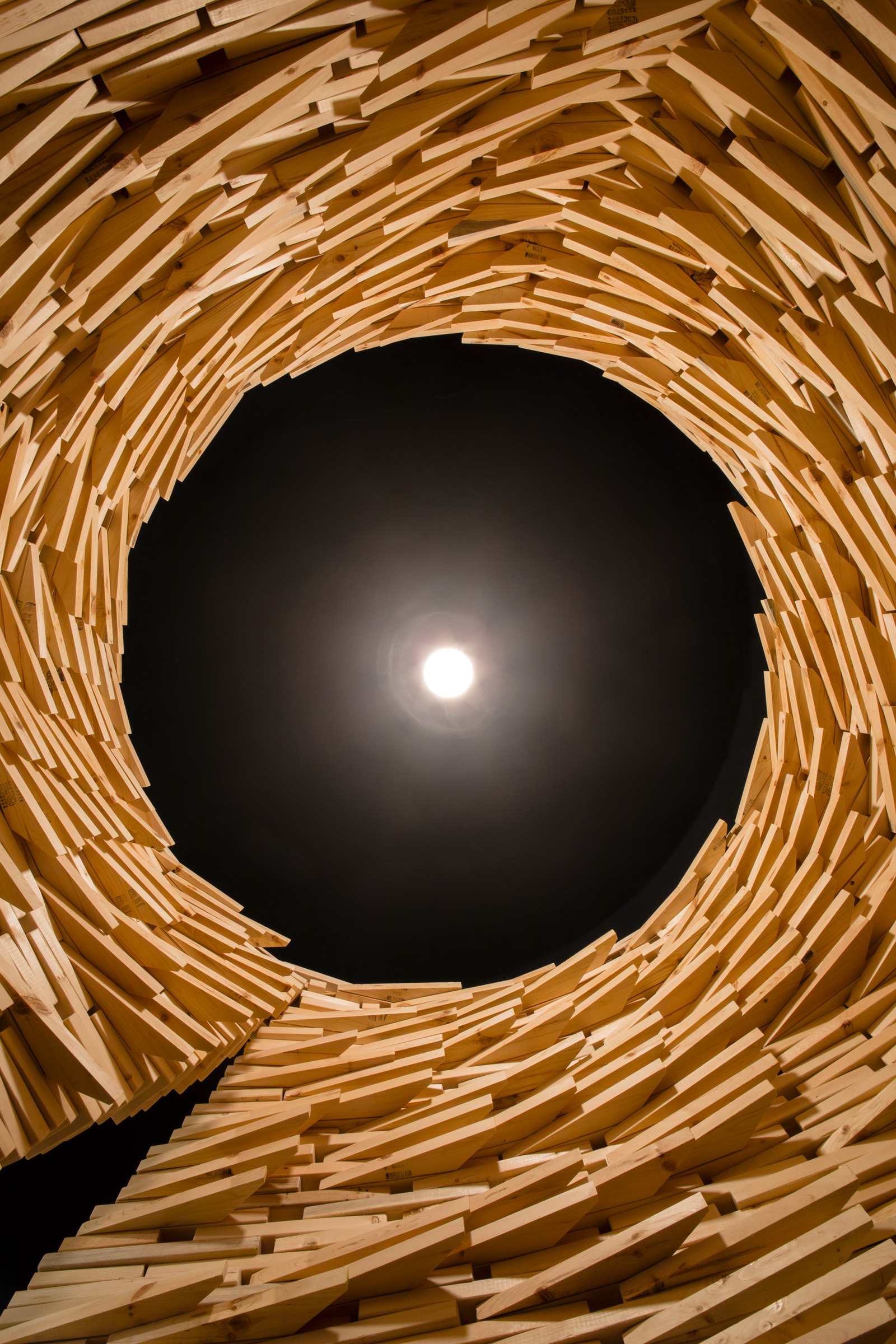
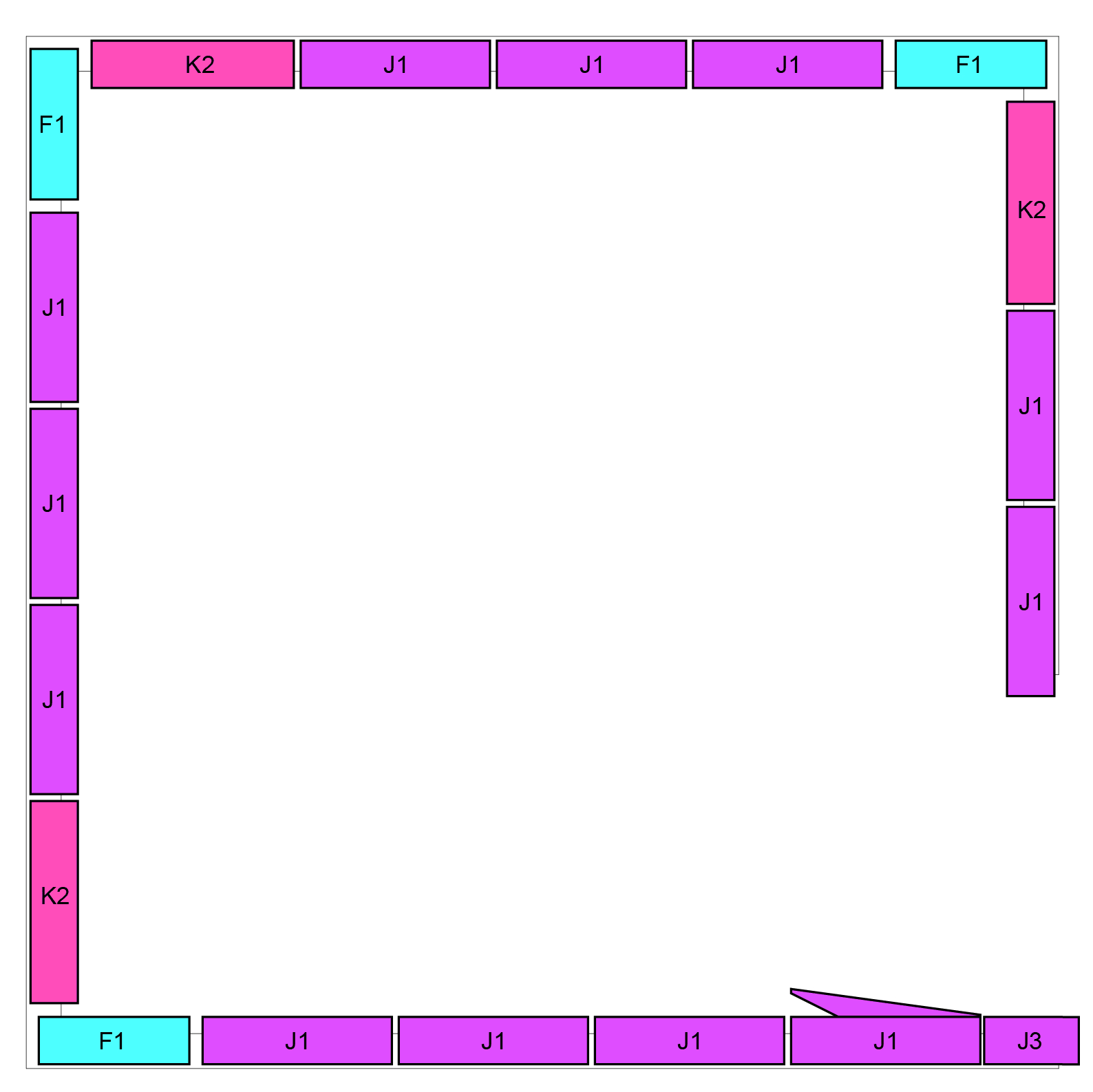
Looking up; board placement map in layers
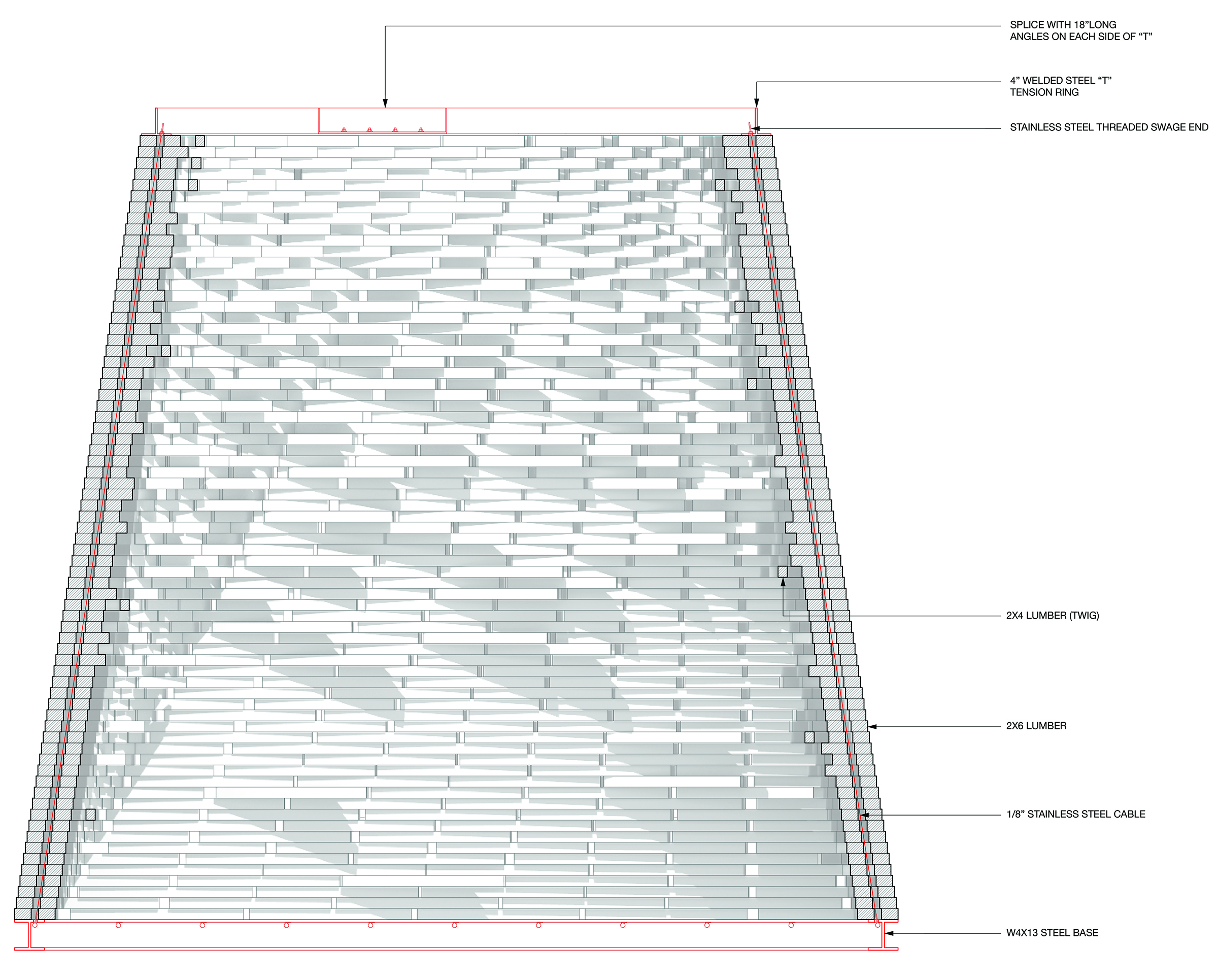
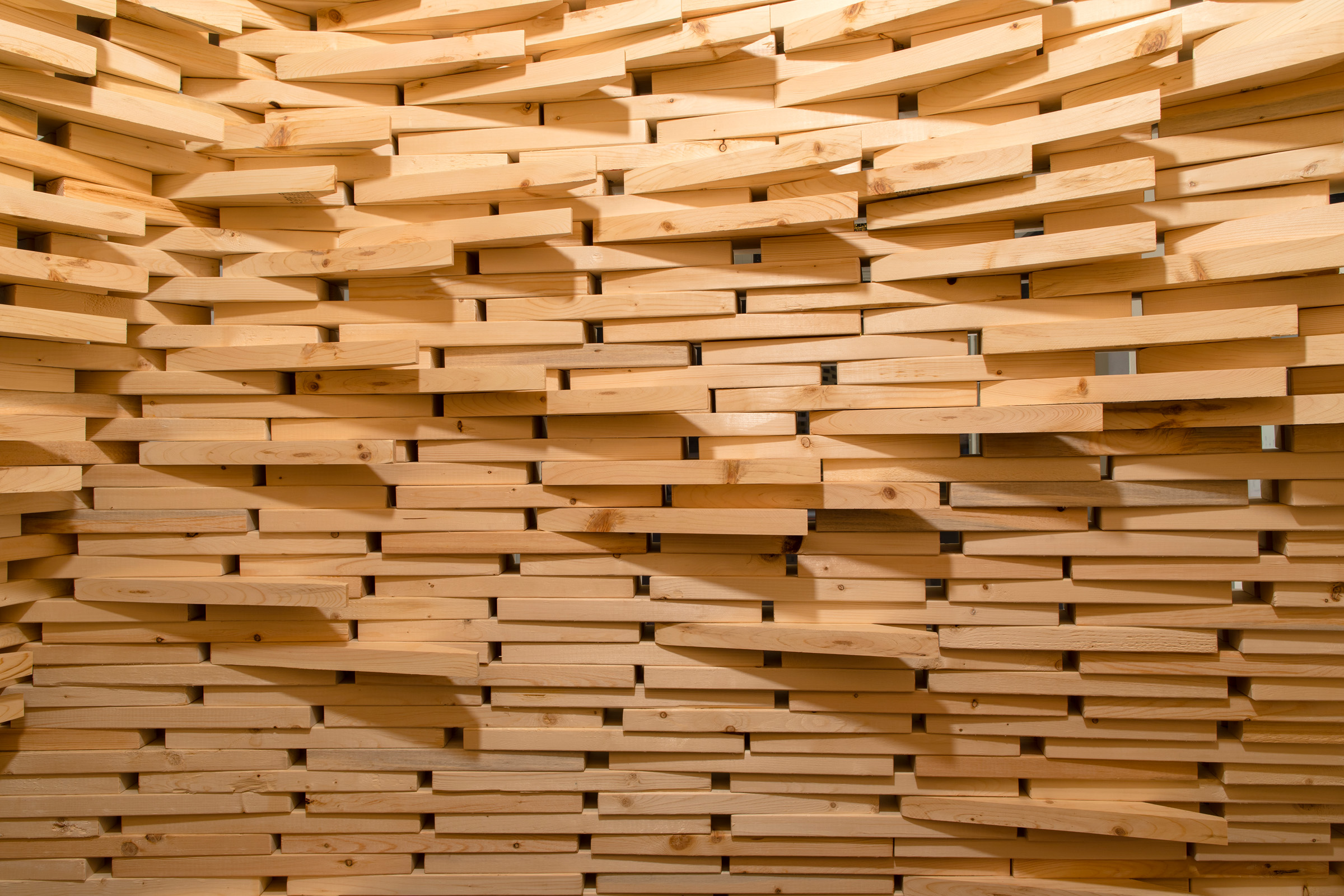
Project Awards
2018 Interior Design Educators Council Award of Excellence, Best in Category: Design as Interior
2017 AIA Nebraska Merit Award for Interior Architecture
Publications
“FLOCK \\ proof-of-concept” by Jeffrey L. Day, ACADIA 2019, Ubiquity and Autonomy, Projects Proceedings, also featured in the ACADIA 2019 projects exhibition in Austin, Texas
View by Category:
View by Type:
